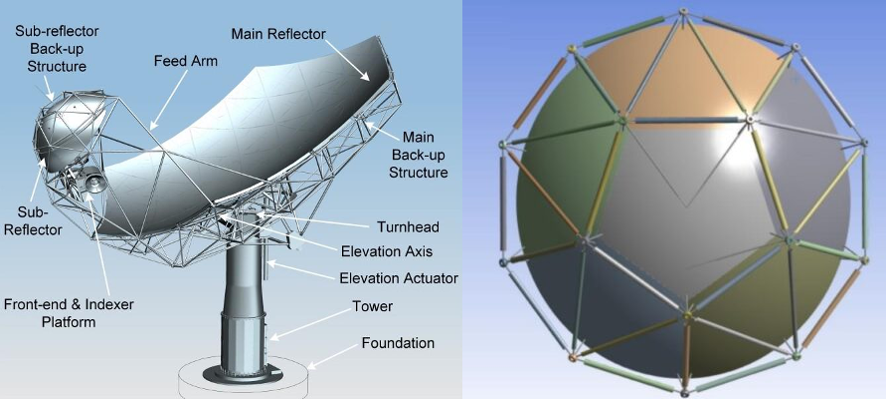Abierto el plazo de inscripción para participar en la Reunión Abierta de la RIA “Spanish SKA Day“, que se celebrará en el Instituto de Astrofísica de Andalucía (IAA-CSIC, Granada) el día 23 de Octubre de 2014.
Durante esta reunión, tanto científicos como ingenieros españoles revisarán el estado actual del proyecto SKA desde sendos puntos de vista. Con ello se desea seguir potenciando el papel activo de la comunidad científica española en la preparación y explotación de SKA, a la vez que dar a conocer el nivel y calidad de la implicación de los grupos y empresas tecnológicos españoles en la etapa actual de preconstrucción de SKA. Se informará asimismo a la industria de sus opciones de participación en las próximas etapas, especialmente en la de construcción.
Actualmente 9 centros de investigación españoles y 11 empresas están contribuyendo al diseño SKA en 6 paquetes de trabajo con un valor económico de ~€2M, reconocido oficialmente por el Board de SKA. Asimismo un miembro de MINECO está siendo invitado, de forma regular, a participar en las reuniones de dicho Board. Todo ello llevó a que el pasado enero el Comité Directivo de la RIA aprobara la recomendación elaborada por su grupo de trabajo “Infraestructuras en Radioastronomía” sobre el interés de la comunidad científica e industria en que España explore la posibilidad de participar en el proyecto SKA como miembro de pleno derecho antes del comienzo de la fase de Construcción (2017).
Como apoyo y reconocimiento de todo el esfuerzo realizado por los grupos de investigación y grupos industriales españoles, ha confirmado su participación en el Spanish SKA Day el Director General del SKA, Prof. Phil Diamond.
El registro permanecerá abierto hasta el 10 de octubre en la página web de la Reunión: goo.gl/dqZjoL, en la que se dispondrá información adicional, y donde se publicará, a comienzos de septiembre un programa científico detallado. Habrá espacio disponible para la presentación de posters, que podrán solicitarse a través del formulario de inscripción.
El Comité Científico Organizador del Spanish SKA day está formado por:
• Chair: Lourdes Verdes-Montenegro, Instituto de Astrofísica de Andalucía (CSIC)
• José Carlos Guirado, Universidad de Valencia
• Antxon Alberdi, Instituto de Astrofísica de Andalucía (CSIC)
• Jesús Martín Pintado, Centro de Astrobiología (CSIC)
• Kauzar Saleh, Centro para el Desarrollo Tecnológico Industrial (CDTI)
• Jordi Torra, Universidad de Barcelona
• Rafael Rebolo, Instituto de Astrofísica de Canarias
• Rafael Bachiller (Observatorio Astronómico Nacional)
• Enrique Martinez, Instituto de Física de Cantabria (CSIC)
• Javier Gorgas, Universidad Complutense de Madrid
• Marisa Vargas, Fractal SLNE
——————————————————–
The registration form to participate in the Reunión Abierta de la RIA “Spanish SKA Day” to be held at the Institute of Astrophysics of Andalusia (CSIC, Granada) on October 23, 2014 is now open.
During this meeting, both Spanish researchers and engineers will review the current status of the SKA project from their respective points of view. This way we aim to keep supporting an active role of the Spanish scientific community in the preparation and exploitation of SKA, while raising awareness of the level and quality of involvement of Spanish technological groups and companies in the current stage of SKA preconstruction. We will inform also industry of the opportunities to participate in the next stages, especially in construction.Currently 9 Spanish research centres and 11 companies are contributing to the SKA design efforts in 6 work packages, with an estimated financial value of ~€2M, officially acknowledged by the SKA Board. Since October 2013 a representative of the Spanish government has been regularly invited to participate in the SKA Board meetings. As a consequence, at the beginning of 2014, the Board of the Spanish Astronomy Infrastructures Network endorsed the recommendation issued by the Radio Astronomy Infrastructures working group on the interest of the scientific community and industry that Spain explore the possibility to join the SKA project as Full Member before the construction phase starts (2017).In support and recognition of all the efforts made by the Spanish research and industry groups, SKA Director General, Prof. Phil Diamond, has confirmed his participation in the Spanish SKA Day.
You can register until 10 October at the meeting website: goo.gl/dqZjoL, where you will find additional information, and where we will post in early September a detailed scientific program. There will be space for the presentation of posters that can be submitted through the registration form.
• José Carlos Guirado, Universidad de Valencia
• Antxon Alberdi, Instituto de Astrofísica de Andalucía (CSIC)
• Jesús Martín Pintado, Centro de Astrobiología (CSIC)
• Kauzar Saleh, Centro para el Desarrollo Tecnológico Industrial (CDTI)
• Jordi Torra, Universidad de Barcelona
• Rafael Rebolo, Instituto de Astrofísica de Canarias
• Rafael Bachiller (Observatorio Astronómico Nacional)
• Enrique Martinez, Instituto de Física de Cantabria (CSIC)
• Javier Gorgas, Universidad Complutense de Madrid
• Marisa Vargas, Fractal SLNE


